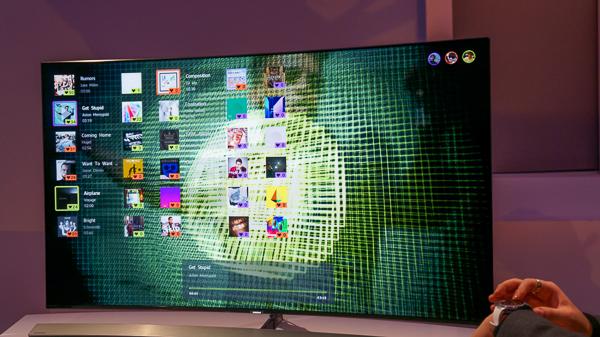CES 2016 Streaming Recap: From 4K HDR to Vinyl

When the Ultra HD (UHD) Alliance announced the technical standards for Ultra HD Blu-ray , the list included high dynamic range (HDR), which is supported by a growing number of 4K TVs and included in UHD titles available for streaming via Amazon’s. As a member of the UHD Alliance, Netflix will surely follow suit. In other 4K streaming news, Sony announced plans to launch the Sony Ultra Movie Service, which will include new and classic 4K/HDR titles from Sony Pictures.
To accommodate the crazy amount of data needed to stream HDR-enabled 4K content, D-Link and Netgear (Nighthawk X8) both introduced 5.3 Gbps routers offering twice the capacity of the AC routers announced last year. D-Link’s Unified Home Wi-Fi Network Kit (DKT-891) includes Adaptive Roaming Technology that automatically moves a data stream from one band to another if the current band gets too crowded. So if you are trying to stream 4K to your home theater while other family member are playing online video games and streaming HD, the router will automatically and seamlessly move your movie stream to another band so it doesn’t buffer, slow down, or lose quality. D-Link staged a convincing demo.
Cord cutting is on the rise. Quoting research from the Wall Street Journal, Sling TV said the number of cord-cutting households has increased to 5 million in recent years. Add to that the number of “cord-nevers” (a recently coined phrase for Millennials who never subscribed to pay TV), and there is a need to accommodate the growing number of households that stream TV content. Sling showed improvements to its previously clunky interface and said there would be no price increases this year. RCA and Terk announced that they would offer a free 10-day Sling TV trial with HDTV antennas introduced at the show.
While we want our live TV broadcasts, we might also want to record them and take them with us. TiVo and simple.tv have made that possible in the past, but this year’s CES saw the entrance of Tabloo, which has a DVR that records and streams from the cloud.
The Dish Hopper DVR has a Dish Anywhere feature allowing users to stream or download shows to mobile devices. But let’s face it, who wants to load a bunch of memory-hog videos to our phones? The solution is the upcoming Hopper Go, scheduled for release in April. This small memory drive can hold up to 100 hours of video and wirelessly streams to up to five mobile devices at the same time.
Bringing something new to the world of streaming audio, Audio-Technica introduced the AT-LP60-BT wireless turntable, which can be paired with Bluetooth-enabled devices such as speakers or AV receivers. (The turntable has a preamp for connecting to AV receivers that don’t have a phono input.) Flexson launched the VinylPlay VP2 ($500) with a 3.5mm line out for connecting to a Sonos speaker or Sonos Connect. A step-up VP3 ($800 without a phono preamp) is slated for release later this year.
Bang & Olufsen introduced the BeoSound 35, a streaming music player combined with a finely engineered speaker that can connect wirelessly with other B&O speakers for a multiroom experience. For those who aren’t ready to abandon their CD collections, the Danish company also introduced a streaming adapter for the classic BeoSound 9000 wall-mountable CD player.
Music streaming to smart TVs was highlighted by LG and Samsung, both of which demonstrated improved interfaces for getting music from a phone to the TV. LG’s new Web OS 2.0 can connect to an app on smartphones and display a carousel of your music in a corner of the screen, making it fast and easy to select music you want to stream to the TV (which can be done with the screen turned off to conserve energy). Samsung has added a new feature to its Tizen-based smart TV menus called the “Playful Media Sharing Experience.” Using an app that will be available for Android phones and iPhones, multiple users can send photos and music to the TV. The content is identified with colors unique to each user and users can vote on which song they want to hear next for a group DJ experience.
Let’s face it, it can be hard to decide what to watch given the glut of online content. Within each streaming service there are usually recommendations based on previous viewing but that requires opening each service. Many media players and smart TVs have home screens that include recommendations from several streaming services as well as live TV. Some aggregate the results, others display results from each service on the home screen. A soon-to-be-available Marshmallow update for Android TV (shown on the Nvidia Shield) will show recommendations for each service on the home screen, making it possible to choose from which apps recommendations will be displayed so the home screen doesn’t get too crowded. Sling TV also showed MyTV with advanced recommendations and search capabilities. The home screen on Sony’s new smart TVs now displays a list of recommendations based on what you watch from all services, including live TV.
Once you find what you want to watch, you’ll be able to control the lighting, lock the front door, lower the blinds, and more, as smart TVs and media players are increasingly adding home control. If someone comes to your door, you’ll receive a notification and be able to play video from a front-door cam. You may never have to leave your couch again.










































